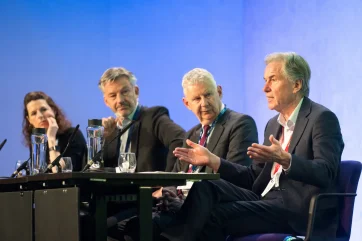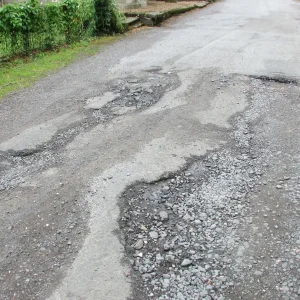
The newly-elected UK Government will need to reckon with stalling consumer demand for EVs, it has been said.
The issue was addressed during the BVRLA’s Fleets in Charge conference, when industry leaders were asked how confident they were about the UK’s road to zero emissions, in the wake of the recent General Election.
Society of Motor Manufacturers and Traders (SMMT) chief executive Mike Hawes noted that manufacturers were already “on the hook” for the ZEV mandate, which sees them required to meet an increasing annual percentage of EV sales, and said that while more EVs were arriving on the market, the challenge was in moving consumer demand.
However, he said: “I’m perhaps more confident [than before the election] because I think we’ll have more consistency [from the new government]. There’s no denying that when the prime minister stands up and says basically ‘chill out, we’re not going to make you buy an EV’, then ten days later publishes a regulation, that sends a mixed message to consumers. Labour’s been very clear, they are committed to net zero.”
Hawes added that a previously published Labour automotive strategy contained “a lot of the things you would wish to see”, but also questioned how easy it would be to deliver “in straightened financial times”.
He said: “They talk about more incentives. It is still a very challenging market, that level of demand when you go from the early adopters to the mass market is never linear. We’re in that very volatile stage at the moment.
“We need to sell these [electric] vehicles, the investment has been made, it’s continued to be made, but you need to make even more – that means a return on the investment, which means increasing the market.
“You can aspire to compel a sale with mandates, but you can’t compel the demand.”
A moving target?
Commenting on Labour’s manifesto commitment to return the date for the end of new petrol and diesel vehicle sales to 2030, Hawes said: “It’s a loaded issue. Some manufacturers would welcome that, others would not.
“That was a commitment that was made the very day Rishi Sunak announced [the date moving back to] 2035, some 12 months ago. The market has changed. As a result of the change last year, product plans were changed, some of them were extended, and you’ve seen globally some manufacturers easing off on gigafactory investments, some EV investment, because they see the market isn’t there globally yet to sustain that transition at the same pace and timescale that they envisaged.”
Hawes explained that the relatively high purchase cost of EVs compared with ICE vehicles was a problem that would need to be reckoned with for some time to come.
He said: “These vehicles are a new technology, they are more expensive to make, there is no getting away from that. Prices will come down, but it will be gradual – you can look at raw materials, that’s what you’re dealing with for batteries, so there needs to be a degree of incentive and help.
“First of all, keep what you’ve got. It’s working in the fleet sector, salary sacrifice, that certainty demonstrably gives confidence to invest. There is next to nothing for the private buyer, so we do argue that there should be some incentives.”
The BVRLA’s Keaney argued that policymakers should take advantage of the growing evidence base afforded by the increased number of EVs now on the road.
He said: “We have a lot of data around those vehicles, and the important thing is to learn from that data. There are some very clear messages that come out.
“Where there is support in place then we are seeing strong sales rates for EV cars, and I think that’s been powered by the company car market and the salary sacrifice market. “We can then see where there is no support, the market is really struggling. We’re seeing that clearly in the retail sector, seeing real issues in terms of the van sector, and also spanning parts of the rental sector where EVs don’t fit the business model.”





